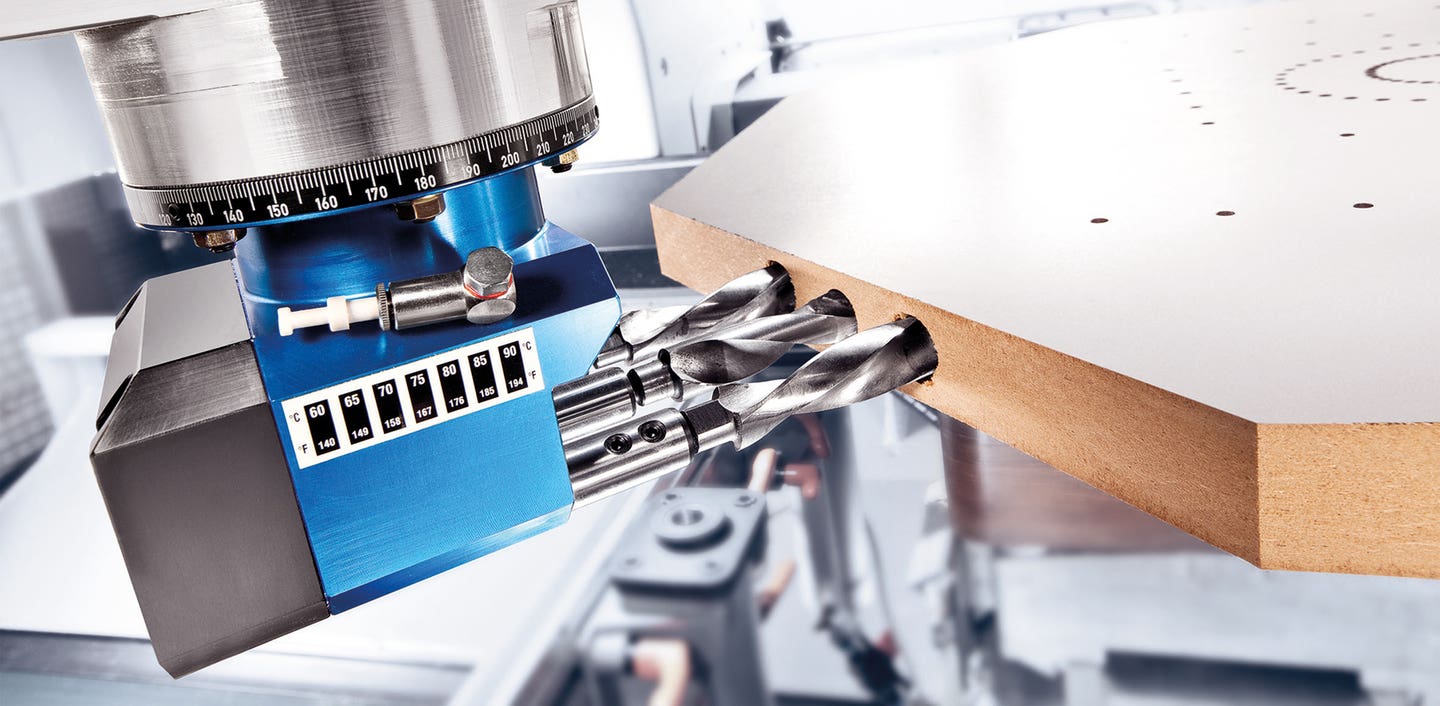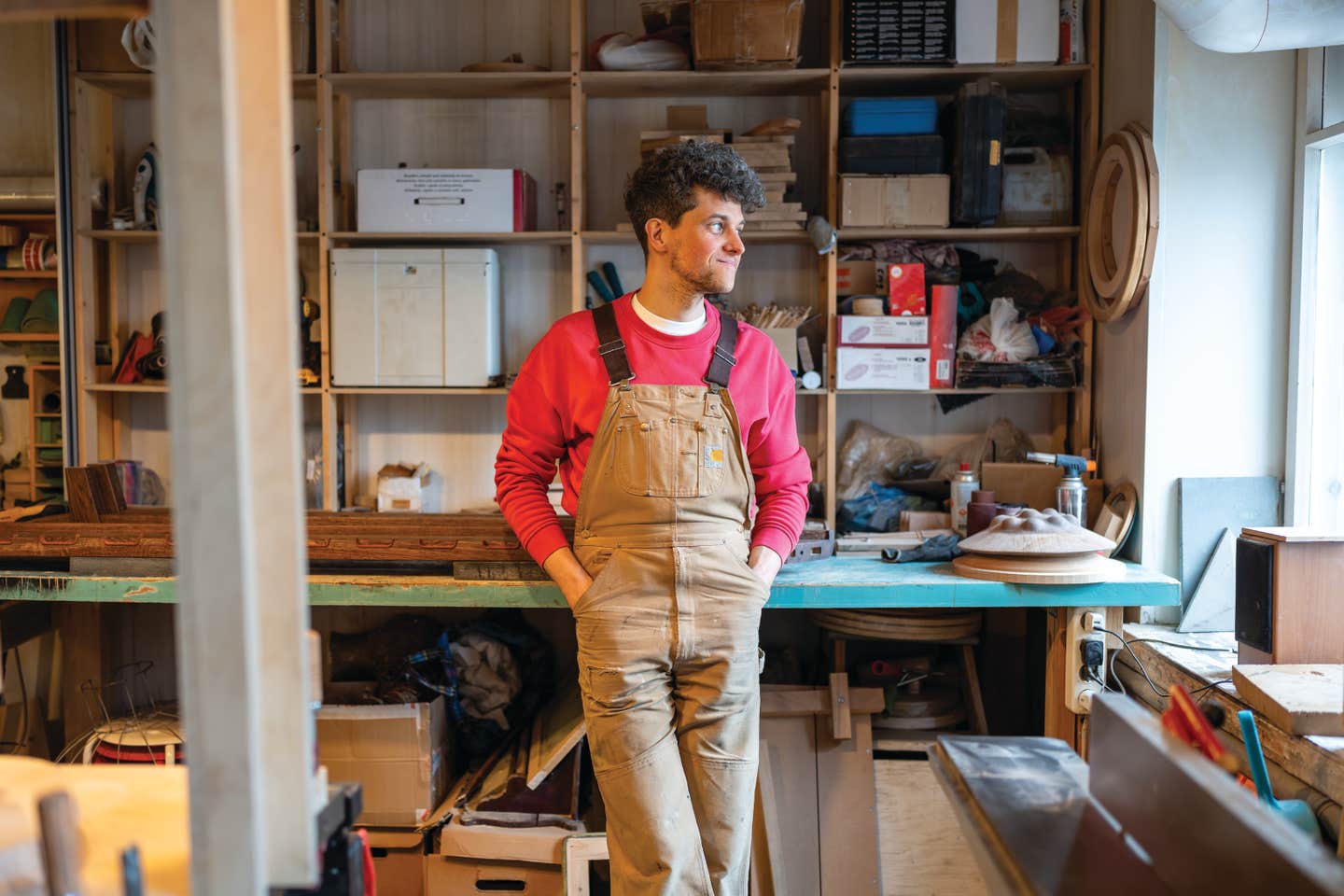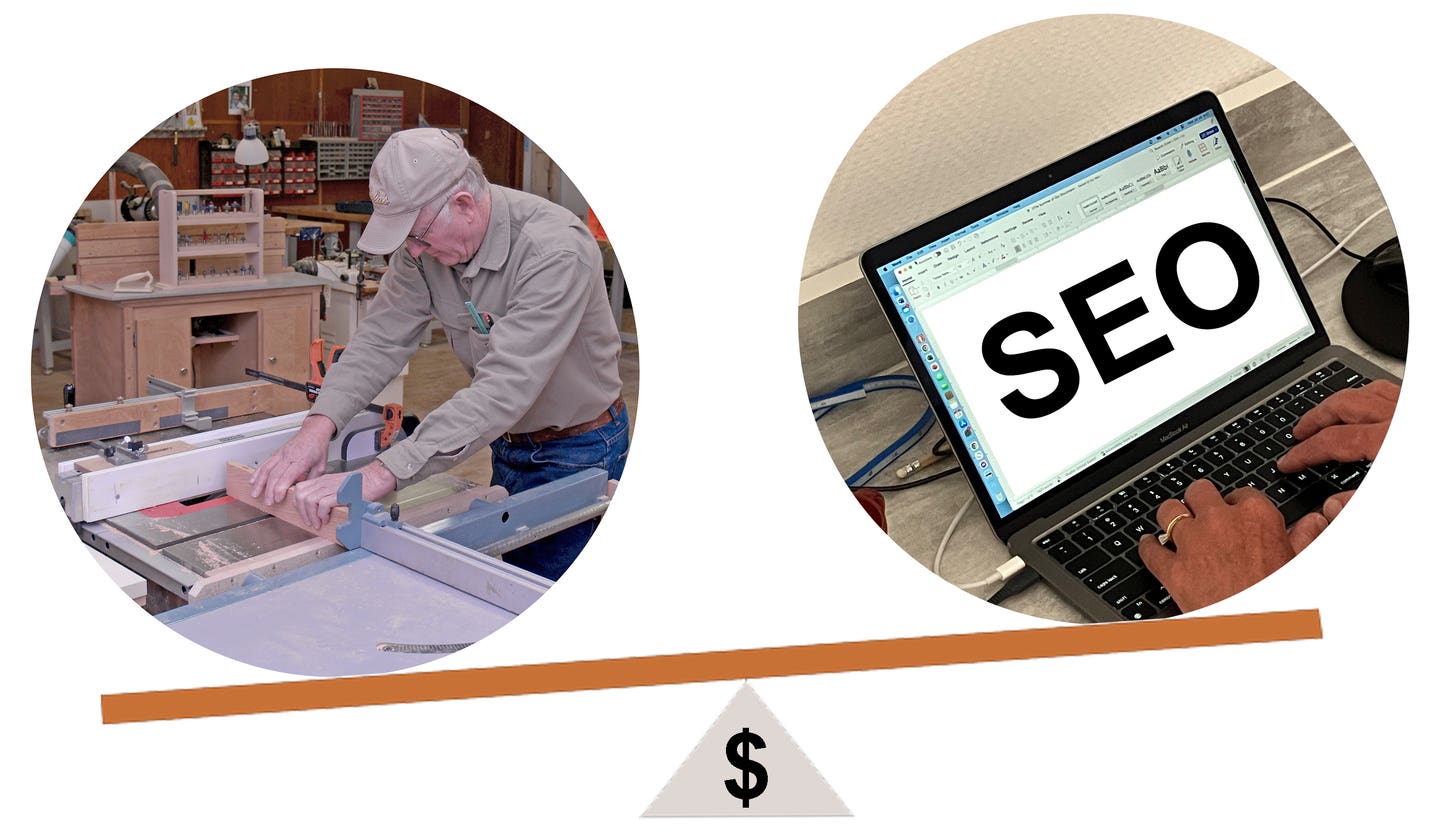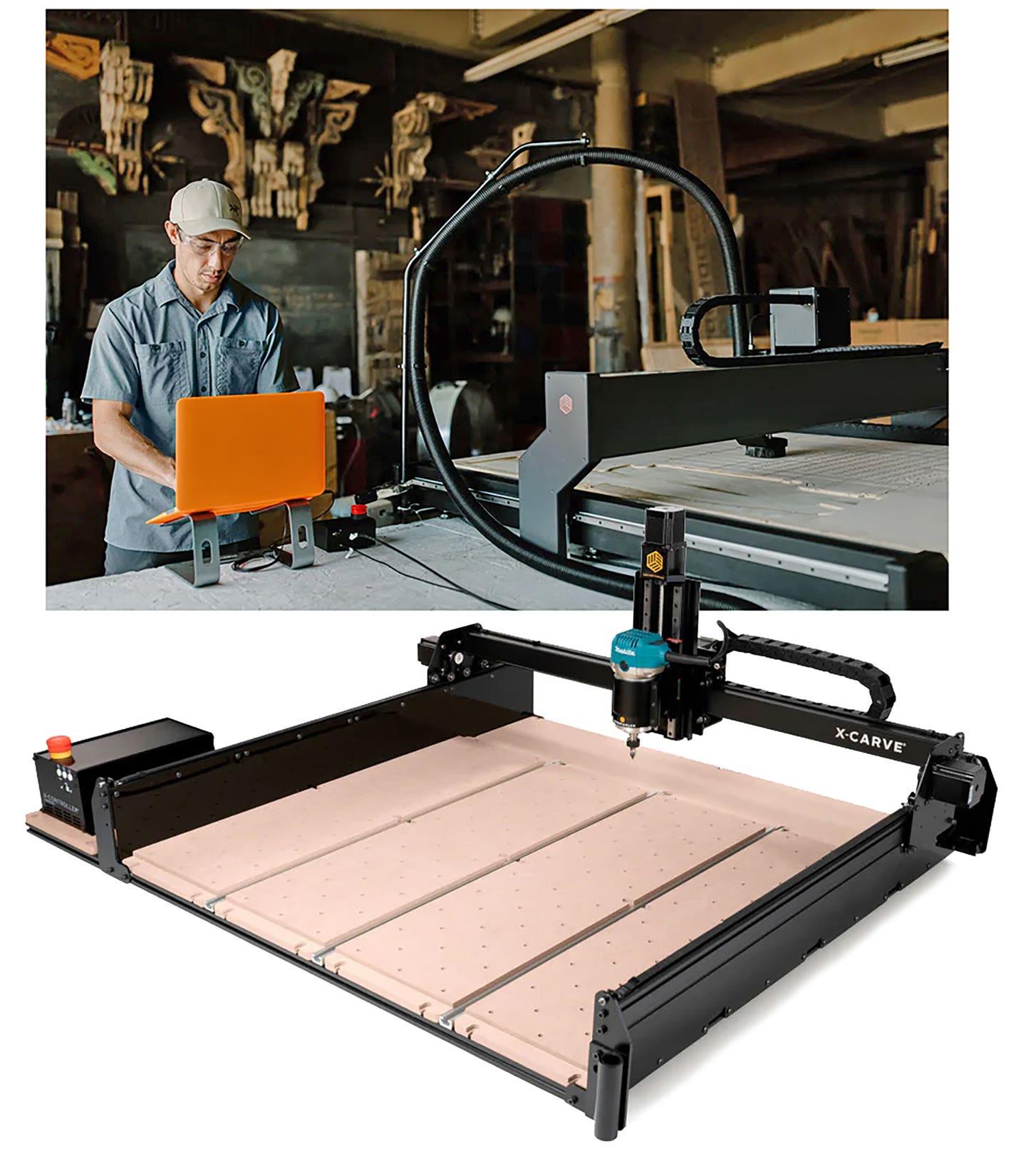On the fast track
New Jersey shop thrives in new, larger space with enhanced machinery and social media push
Greene Street Joinery of Keansburg, N.J., is a relatively new venture experiencing a good streak of progress. Owners Jeff Krug and Rob Barone formed the company in 2019 with a third partner who has since retired. Volume gradually increased leading Krug and Barone to move from a small barn to a 4,900-sq.-ft. shop on Main St. where they continue to crank out custom projects.
“The whole reason for wanting to move was to be able to grow the business by being more competitive and faster, and sales have gone up steadily each year. We were close to half a million last year, and this year we expect [sales] to be higher,” says Krug.
The two primarily build kitchens and built-ins for homeowners but are mindful not to put all their eggs in one basket. They have additional streams of revenue, including a commission to build batch products with a laser cutter and social media pursuits.
The backstory
Krug, 35, started in the restaurant industry and got into carpentry after Hurricane Sandy devastated the area in 2012. He met Barone on a jobsite in 2016 while working as the lead finish carpenter for a custom builder. Barone, 62, had been working for Thomas Charles Cabinetry in Long Branch, N.J.
“Rob and I sort of hit it off right off the bat because I was acting as stand-in project manager,” says Krug. “We started chatting and saw each other over the course of the next several months when we were working around the house. Flash forward to 2018, the shop Rob worked for was looking for help and I was ready to move into cabinetry, so I interviewed and took the job.”
Shortly thereafter, Barone, who had run his own woodworking business, Barone Woodwork, for 15 years prior, decided to work solo again. Krug joined him several months later, along with Rich Szpakowski. The three formed Greene Street Joinery, an homage to the Greene & Greene brothers from whom they draw inspiration in terms of design ideals. Szpakowski left the company in late 2020.
“It was just Rob and I working out of his shop, an 800 square foot pole barn on his property,” says Krug. “We were doing a lot of inset cabinetry and furniture directly for homeowners and trying to get in with some builders and designers. By the fall of 2022, we were really busting at the seams. We had all this work but were unable to compete because we couldn’t fit the machinery that we needed in there.”
After an extensive search, the two found their new shop and moved in the first week of 2023. Since the move, they’ve acquired a Cehisa Compact PCS edge bander, Hammer HS950 edge sander, Gannomat Optima 25 construction boring machine, and Striebig Compact 5x10 vertical panel saw.
Mixed bag of projects
Residential work for higher income clients is the core of the company’s product offerings.
“At this point, we’re probably doing 70 percent residential and 30 percent commercial. We’ve gotten in with some good designers, so we’re doing nice work with them, lots of built-ins, stuff like that, some kitchens,” says Krug.
“We’ve gone as far as the Hamptons (N.Y), all the way out to Bridgehampton. But we mainly stick around this area in Jersey City, Hoboken, and those suburbs sort of adjacent to there, Livingston, West Orange, and Montclair. We’ve shipped product to Aspen, Colorado and Naples, Florida.”
The shop completes up to three dozen major projects a year. The partners have their own unique talents but share many roles. Krug says Barone has been a strong mentor.
“Rob is definitely the more artistic one, I would say, but he’s reached a point in his career where he’s given me the reins and lets me do more of the design work and the pricing because at some point it’s going to be my company.”
Back in 2022, they were commissioned to make Kenji & Leone salt cellars, which are finger-jointed wooden salt boxes made with cherry and walnut.
“We’ve been making these for two years now,” says Krug. “We make about 1,000 a year in two batches of 500. They’re for Kenji Lopez and Brad Leoni, two famous chefs. They found us on Instagram. So, we’ve been making these for them, and $25 of every box sold gets donated to No Kid Hungry. It’s a great project. Our last batch of 500 sold out in eight minutes.”
To speed up the process, they purchased a Boss LS1630 105-watt laser, which paid for itself after the first batch.
“We thought about trying to use the laser as a means of bringing in more income in other ways, but it’s just not something we’ve devoted a lot of time into figuring out what we could make. As a small business owner there’s so much going on all the time and so many fires to put out it really hasn’t manifested into anything,” says Krug.
Content creators
Greene Street Joinery recently started a YouTube channel, Today’s Craftsman, with John Peters, a nearby craftsman and veteran of the medium. The content has focused on how it’s done in a professional shop.
“We’ve known John for years and finally decided to collaborate on this channel,” says Krug. “We want to be ‘the source for the modern woodworker’ and we’re trying to give these concise and informative videos that don’t have all the fluff and theatrics like a lot of these YouTube woodworkers. A lot of them are hobbyists but we’re the real deal. Not to toot our own horn, but we do this 50 to 60 hours a week. So, we have some great information we can pass on to others.
“It’s a slow growth where we’re seeing any real money through the ads, but the idea is for it to be a true source of income at some point. We also do a weekly podcast, the American Craftsman. It’s just Rob and myself with guests like other woodworkers, carpenters, interior designers, etc.”
Krug says that aside from the business exposure and potential income that surrounds using social media, a big return on the investment is networking.
“I can reach out to dozens of different people who work in this industry and ask how they do something, price something. It’s like a guild with access to people all over the world.”
Looking ahead
Krug feels the shop is in a solid market with plenty of work to be found.
“There are a few cabinet shops around here but there’s enough work to go around, and we don’t have any sort of animosity towards other cabinet shops. We’re of the mindset where a rising tide raises all ships, so if they’re doing better it’s going to be good for us. If they can get paid more, then we can get paid more.”
The abundance of work, however, leads to the inevitable issue of finding more help. Krug and Barone currently have a part-time administrative assistant to help with bookkeeping. They’re looking to hire a craftsperson as soon as they can, especially with Barone nearing retirement.
“I’d say we’re on the precipice of where it’s getting to the point that we need someone. Last year we went through a period where we had eleven jobs going at one time,” says Krug.
“The plan with this shop was to have not only the space, but the ability to take on an employee. It’s something we always talk about, but we want to be ready for it financially where we can give someone a well-paying job, a good job, and not just bring someone in for minimum wage and not have them work certain days. I would rather stretch myself to get something done than bring them in and not be able to keep them working.”
Learn more at greenestreetjoinery.com.
Originally published in the May 2024 issue of Woodshop News.







